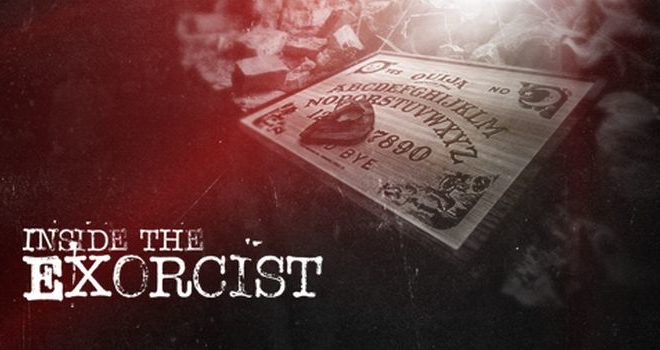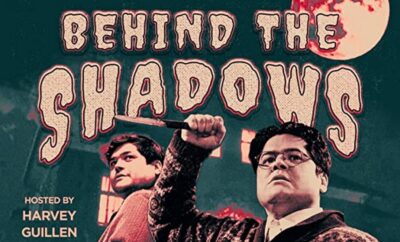
Interviews
Mark Ramsey – Inside the Exorcist
By: Maggie Stankiewicz
Q) In the podcast, the novel, and in various media representations of The Exorcist and other similar stories, the demonic entity seems to target those who already have some semblance of faith in the Catholic God. Why do you think that is? Would, or could a demon possess a faithless individual?
A) I think there would be no point to possessing someone without faith since the goal of the demon is to punish the faithful and sap the faith, to compel us to believe that we are only mortal shells with no soul.
Q) Do you think the question, “Have we beaten evil or has evil beaten us?” will ever be truly answered? Shows such as “The Exorcist” demonstrate this moral dilemma on an allegorical level, but is a definitive answer something we’ll ever truly have?
A) The dance between good and evil will last as long as there are good and evil and there will always be both. The idea that an exorcism “cures” a possessed individual doesn’t mean that others don’t, in turn, become possessed later. Just as all of us literally are choosing at any time between our better and worse angels, the symbolism of possession suggests that the battle is always and forever and the victory of good over evil may not be permanent but certainly must be hard-fought.
Q) To what extent would you say William Peter Blatty believed in the reality of the story he was writing, if at all?
Q) Blatty believed in faith and the power of love. And that’s what the story is really about – the power of love for what seems unlovable and the grace that comes from sacrifice for that love.
Q) How did you decide which stories you would tell through the course of this deep-dive? Were there any people, characters or stories that you initially wanted to explore but were unable to?
A) I wanted to tell a sweeping, epic story. And the beauty of audio – unlike film or TV – is that this vast canvas is harder to convey but not more expensive to produce. We spanned centuries (literally) and traveled across the world. And we did it all between your ears. There was nothing that I wanted to touch on that I didn’t cover. There were a few things that I dropped for artistic reasons because they didn’t fit. But we packed a LOT into those seven episodes and one of my great satisfactions is that folks can follow with so many characters (almost all in my voice), so many settings and such fast pacing. This has to be one of the fastest-moving audio experiences ever.
Q) In your other podcast Inside Psycho you examine the robust and often peculiar history of the Alfred Hitchcock classic. What do you think it is that makes these legendary horror films so interesting and so susceptible to inexplicable occurrences?
A) It’s not just these. Many movies are susceptible to things that are compelling, if not inexplicable. The story behind every great piece of entertainment invariably involves interesting characters, potent desires, intransigent obstacles, delightful – and distressing – surprises, great success, and sometimes the burden of failure. That’s drama. That’s character. And that’s what makes these stories worth telling. I like to say these stories are not about the movies per se, they’re about the people in and around the movies, the themes which animate them, and the larger themes which all of us can relate to.
Q) A lot of effort must go in to creating and producing Inside The Exorcist, with its incredible haunting audio effects, historical anecdotes, and well-produced narration. What is the most challenging aspect about production?
A) Everything. There is nothing simple about this process. That’s why when people ask me, “What happens if everybody goes and does Inside this movie or Inside that movie?” my answer is: “Let ‘em! This is hard!” And so far, I’ve seen…zero! So, that’s how hard it really is. But I want to stress that what makes it worthwhile for me is not that we do justice to the story alone, but also that we tell a more universal story. Inside The Exorcist is about redemption: Every character is either redeemed or ultimately cursed. But it’s also about something else: The idea that you don’t always get what you want in life, but what you get is yours. And to live a happy life you have to embrace it.
Q) It’s clear that Inside the Exorcist wants to create a rich and deeply engaging experience for listeners – and it certainly succeeds. How many members are a part of the production team?
A) You will be shocked to learn how lean the team is. I conceived, did all the research, wrote and narrated the series. Inside the Exorcist is presented in storybook fashion, so all the voices are mine (with one important exception: Linda Blair is voiced by the amazing Stephanie Drake from TV’s “Mad Men”). Sound designer Jeff Schmidt did an exceptional and award-caliber job bringing the script to life and taking thin sound direction and making it infinitely better than I ever could have imagined. Meanwhile, the Wondery team of Hernan Lopez and Jeffrey Glaser were always helpful with notes and comments that sharpened the show’s focus. I am immensely grateful for their contributions. I knew from the beginning that I wanted partners with a TV sensibility, since both Inside Psycho and Inside the Exorcist are essentially TV series without the picture – and Hernan and Jeffrey were hugely supportive of this all along the way.
Q) When William Peter Blatty heard the story of the haunted boy in his religion class at Georgetown, it was forever engrained within him. Do you think he set out to make The Exorcist that story for his readers?
A) He was in a career rut and he had a great idea sparked by that day in his Georgetown class. More than anything, he wanted to make something that critics evaluated fairly and audiences appreciated. In no way did he expect to produce the cultural touchstone that The Exorcist became.
Q) What elements do stories such as Psycho and The Exorcist have that make them so timeless? Why are audiences still so ready to consume and explore these pieces of art (besides the pea soup)?
A) They are stories about passionate and imperfect heroes, exactly the kind of heroes we all wish ourselves to be and can relate to. Who hasn’t had something go really well only to find repeating it impossible (like Hitchcock and Psycho)? Who hasn’t had cocky moments in their youth that they spend a lifetime trying to come to terms with (like Billy Friedkin in The Exorcist)? It is the humanity of these characters that makes them compelling and worth hearing about. That’s why Inside the Exorcist is so much more than a “director’s commentary track.” And that’s why it was worth creating and it’s worth hearing.
Q) Have we met all the major players in the Inside the Exorcist exploration or do we have to wait until next episode for more introductions?
A) Oh, there are more coming. You have yet to meet the voice of the demon and a smattering of supporting characters whose stories will amuse, distress and charm you.
Q) What are your key takeaways from creating Inside the Exorcist? Has anything you’ve learned through your research made you think twice about what truly goes bump in the night?
A) Well, there’s that constant question about the “haunted boy.” Was he really possessed? Or was he mentally ill? Or was he abused? We don’t really know for sure, do we? Certainly, the priests who conducted the exorcism were certain of his affliction. What’s also certain is that for the past 40-some-odd years, that boy – now an older man – has never wanted any public association with the book or movie phenomenon inspired by his story. That suggests to me either that he is a very private soul or that the terrors he experienced were so unsettling he can’t bring himself to discuss them with a curious world, which would forever decline to give him peace.




You must be logged in to post a comment Login